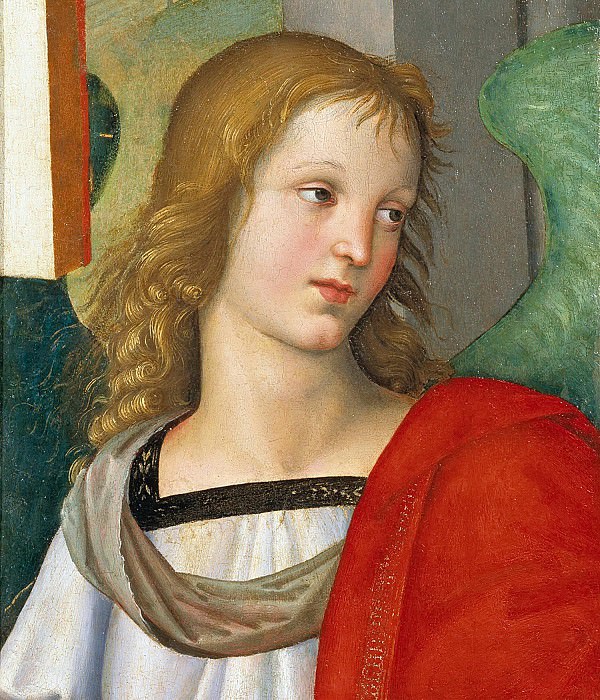Angel Raphael (1483-1520)
Raphael – Angel
Edit attribution
Download full size: 1500×1750 px (0,4 Mb)
Painter: Raphael
Location: Pinacoteca Tosio Martinengo, Brescia.
The artist lived and worked during the Renaissance. His name was known throughout Florence (at that time that city was considered the center of art and painting). The fame of the brilliant artist was so great that he was assigned a special task - to paint the apartments of the Pope. Raphael Santi painted the picture "The Angel" in the beginning of the 16th century, at the age of 17 or 18 years. It is worth noting that the canvas was painted to order, not by inspiration.
Description of Raphael Santi’s painting Angel
The artist lived and worked during the Renaissance. His name was known throughout Florence (at that time that city was considered the center of art and painting). The fame of the brilliant artist was so great that he was assigned a special task - to paint the apartments of the Pope.
Raphael Santi painted the picture "The Angel" in the beginning of the 16th century, at the age of 17 or 18 years. It is worth noting that the canvas was painted to order, not by inspiration. On December 10, 1500 the seventeen-year-old artist approached the local bishop and offered a contract to perform an altarpiece in honor of the coronation of Nicholas of Tolentine, who overthrew Satan. If successfully completed, Raphael was promised the title of "master" and a handsome fee.
Only two fragments of this altarpiece with a well-preserved painting of the Angel have survived. It is worth noting that already at a fairly young age (17-18 years) Raphael skillfully conveyed the psychological state of the person on the canvas. If you compare the two painted angels on the altar, the first differs from the other angel soft facial features and love in the eyes.
The young artist skillfully conveyed the play of shadows and the contrast of lighting. The lighting, clothing and artificial light sources, as if to complement all the softness of the character of the "Angel," they are in harmony with the look and essence of the servant of God.
One glance at the painting is enough to see the artist’s intentions in depicting the contrast between the two figures. Neither before Raphael nor after him in a long time had anyone learned how to convey the psychological features of individuals so subtly.
In 1789 the altar was badly damaged by an earthquake, and only the painting of the Angel and the Virgin Mary are left of it. At the moment, the painting has been in the Louvre since 1981, when he bought it back from a city cab driver who had inherited the painting.
Кому понравилось
Пожалуйста, подождите
На эту операцию может потребоваться несколько секунд.
Информация появится в новом окне,
если открытие новых окон не запрещено в настройках вашего браузера.
You need to login
Для работы с коллекциями – пожалуйста, войдите в аккаунт (open in new window).




















You cannot comment Why?
The figure wears a white undergarment with a black decorative trim around the neckline, over which a draped cloth, possibly a sash or part of a robe, is loosely fastened. A vibrant red garment, possibly a cloak or robe, is draped prominently over the right shoulder and chest, its rich color contrasting with the lighter tones of the undergarment. A green, wing-like form is visible behind the head and to the right, confirming the angelic identity. The background elements are abstract, with a vertical band of red and white on the left and a grey plane on the right, suggesting architectural or celestial surroundings rather than a tangible location.
The subtexts of this painting likely revolve around themes of divinity, beauty, purity, and perhaps introspection. The androgynous appearance can evoke a sense of otherworldly perfection, transcending earthly gender distinctions. The downward gaze and serene expression might suggest humility, divine wisdom, or a connection to a spiritual realm. The rich colors, particularly the vibrant red, can symbolize passion, sacrifice, or divine love. The overall impression is one of ethereal grace and quiet solemnity.